- The new BMW M5's plug-in hybrid powertrain makes 717 horsepower and 738 lb-ft of torque.
- All-wheel drive and rear-axle steering are standard.
- 0-60 mph takes 3.4 seconds and the M5's top speed is 190 mph.
- The 2025 BMW M5 starts at $120,675 including destination.
2025 BMW M5 First Drive: The M Stands for Missile (or Massive, or Mind-Boggling)
It's fast, but is it fun?
Forty years ago the BMW M5 essentially created the modern sport sedan segment. And while the general recipe hasn't strayed too far from its original formulation over the subsequent decades, the new 2025 BMW M5 adds even more power, complexity and, yes, mass, making it the most powerful, sophisticated, heaviest and most controversial M5 ever.
Electrified performance
At the heart of the new M5 is an evolution of BMW's twin-turbo 4.4-liter V8 engine but now with the integrated hybrid system that debuted in the, ahem, unique XM. This V8 still mounts its turbos in between the cylinder banks, spins up to a fairly athletic 7,200 rpm, and churns out 577 horsepower and 553 lb-ft of torque. By these numbers alone, it’s less powerful than the previous M5, but when combined with the electric motor built into the eight-speed automatic transmission, those figures rise to a mighty 717 hp and 738 lb-ft.
Being a plug-in hybrid means you don't always have to burn fuel at a rate that 700-plus-hp V8s typically do. The M5's lithium-ion battery offers 14.8 kWh of usable energy, and my best napkin-math guess, based on highly optimistic European test figures, is that it should provide around 25 miles of pure electric driving range. When it's time to recharge, the M5 will support up to 11 kW of Level 2 power. So figure about two hours to top that battery up from empty. Beyond that, if the XM's EPA-estimated fuel economy is any indication (14 mpg combined after the battery is depleted), the M5's consumption should hover somewhere in the high teens. It's a good thing you're not buying the M5 for its efficiency.
When you're not crawling through rush-hour traffic, or at the very least you come across a wide-open on-ramp, BMW says the M5 is good for a 0-60 mph sprint of 3.4 seconds. If you're wondering how you get 738 lb-ft of torque to hook up on an unprepared surface, the answer is: Send it to all four wheels. Since BMW's acceleration estimates have shown to be a bit conservative, it wouldn't surprise me to see something closer to 3 seconds flat when the M5 arrives at the Edmunds track for instrumented testing. Keep your foot planted and you'll eventually reach 190 mph (or an electronically limited 155 mph if you passed on the M Driver's package).
What else do you get?
The M5 has always received more than just a horsepower bump over the standard 5 Series, and the new car is no different. From the grille and aggressive lower fascia to the flared fenders and wider rear track and rear diffuser, there's a not insignificant amount of new styling and bodywork on the M5. Some angles are better than others for this big sedan, but the right ones — and in a good color (maybe not yellow) — make the M5 look pretty serious.
The chassis and suspension have also been revised. The former gets additional bracing under the hood, to the front and rear bulkheads, as well as underfloor reinforcements. The latter gets stiffer mounts and lighter components and has fully adaptive dampers. The wheels and tires are staggered in width and diameter with 285/40ZR20s up front and 295/35ZR21s bolted on out back.
For the first time, rear-axle steering is fitted to the M5. Compared to other vehicles that use a similar system, the M5's rear steering angle of 1.5 degrees isn't that dramatic, but it does help tighten the turning radius and should be imperceptible while making the M5 feel a bit more responsive and lighter on its feet. As with other M vehicles, the M5 gets revised center and rear differentials and a sport-tuned all-wheel-drive system. If you're allergic to traction, there's a setting to go fully rear-wheel drive. Carbon-ceramic brakes are also an option.
What about inside?
As you'd expect, the M5 is pretty similar to the rest of the 5 Series range. There's a large curved digital display that combines both the instrument panel and the infotainment system, as well as very few physical buttons. The M5 gets a revised center console, losing its traditional shift lever, as well as a new layout for its various settings buttons, which are now placed too far back to be used without at least one glance downward.
The M5's seats look every bit like something you'd want to see in a sport sedan but offer more padding and a bit more opulence than the seats you get in an M3, M4 or M8. There's a high level of adjustability with these seats too. It took a bit longer than expected to dial in my preferred position, but once I did, it was great.
The steering wheel remains standard fare for an M car. Sporting a flat bottom, the wheel is still slightly overpadded and thick for my liking, but it remains comfortable no matter what kind of driving you're doing. The shift paddles have also been reshaped.
Standouts from the M5's long list of tech features are the automated parking feature controlled via the BMW app on your smartphone, the larger head-up display, and augmented reality system for the navigation and the Traffic Jam Assistant, which can provide unlimited hands-free driving at speeds under 40 mph.
Bahnstorming
Even though BMW's headquarters are in Munich, which seems like a fine jumping-off point for the drive, I can't help but notice that the first section of my drive route spends a bit of time on an increasingly rare unrestricted portion of the autobahn. I'm sure that's just a coincidence. Moderate traffic lightens up, allowing the M5 to explore some, if not all, of its 717 hp and prodigious 738 lb-ft of torque. The M5 simply teleports from 60 to 125 mph. Want to go to 150 mph? You'll have to wait a bit longer, but not much.
Forcing the throttle pedal to the floor delivers two eyebrow-raising observations. The first: The 4.4-liter twin-turbo V8 is essentially inaudible, even at wide-open throttle, though this might have something to do with the European-mandated exhaust particulate filters. The second: The eight-speed transmission sees no need to drop a gear (in this case, into fifth) to pull this ridiculous acceleration. It stays resolutely in sixth gear, tapping into most of its electric power and absolutely all of its gasoline-powered grunt. The result is a serene yet slightly disconcerting accrual of speed, reminiscent of what you get in a high-powered EV.
At these speeds, the M5 is utterly stable and trustworthy. Its road-hugging weight certainly plays a part but the steering wheel is quiet, and the rear-axle steering only adds confidence as it helps move the whole car at once. The only fault noticed at these speeds is the high level of wind noise emanating from the mirrors. With the rest of the M5 experience being so quiet, it's surprisingly pronounced at speeds over 80 mph. At least you have some noise to give you a hint of just how fast you're traveling — well, besides the Audi RS 7 you just blew by.
Backing it down to more sane, U.S.-spec speeds, the M5 does an excellent job of being a fast, comfortable sedan. Using its default Hybrid setting (one of five drive modes), the big BMW does well to mask its weight. The suspension controls body motions but still allows for some small movement so the M5 never feels overly stiff. The steering effort is light and fairly direct, but the M5 never feels nervous. It's absolutely in its element on fast freeways and unrestricted autobahns. As with other M offerings, there is a surfeit of settings controlling everything from shift strength to ride quality to regeneration and even synthetic engine-ish noise. Pro-tip: Leave that last one off.
Nervous laughter
Once off the autobahn, the drive route takes me and the M5 on a slew of Bavarian backroads. These backroads connect small villages where the speed limits drop from "as fast as you dare" (essentially unrestricted) to "don't you dare" (between roughly 20 and 30 mph). It's the roads between the villages where driving M5 becomes an exercise in superhuman levels of restraint, and sometimes difficult and unrewarding. But it's not because of the M5's lack of ability.
It's just that the M5 is too big and too fast for these roads. While its hefty mass can certainly be felt during larger steering and braking inputs, the M5 never proves to be the limiting factor out here. It's more the M5's physical size — it takes up essentially 90% of its lane on these roads — leaving you precious little room for a bit of rear-end slip and the M5's shocking speed.
With a clear view of a gently undulating straightaway ahead and the M5 set up in its Dynamic mode, a generous amount of throttle is quickly retracted when I realize I simply can't be going that fast. All that speed the M5 piled on during quick blasts on the autobahn is beyond overkill on winding roads, and I have no shame in admitting that my breath was taken away as I approached many corners that, just seconds earlier, seemed far enough away.
The plug-in hybrid part of this powertrain adds incredible thrust, especially at low to medium speeds. Need some proof? BMW says the M5 needs just 2.2 seconds to propel itself from 50 to 80 mph (80 to 120 kph, to be specific) while in fourth gear. Translation: That grouping of trees at the end of this straightaway that hides the next corner of an unknown radius is now here. Now.
Slowing the M5 down with its optional carbon-ceramic brakes isn't difficult, but bending it into a bend reveals not only some of its significant mass but also a lack of feedback. You see, because of the physical size and huge capability of the M5, I just can't go fast enough or charge hard enough to get anywhere near the limits of this thing. Not on public roads anyway. That fact hasn't escaped BMW executives, who freely admit that the limits of the M5 cannot be reached on a public road, and unless owners take their M5 to the track, they'll likely never know what this supersedan is capable of.
That's a shame because it takes a lot of the fun out of driving the M5 with any enthusiasm. A moderate amount of throttle builds more speed than you know what to do with, and its size and immense levels of grip mean playing with its limits is just asking for an unplanned trip to the body shop. If you're looking for a cruise missile for cross-country travel, the M5 is where it's at. But on roads like these, a BMW M2 is a far more engaging option.
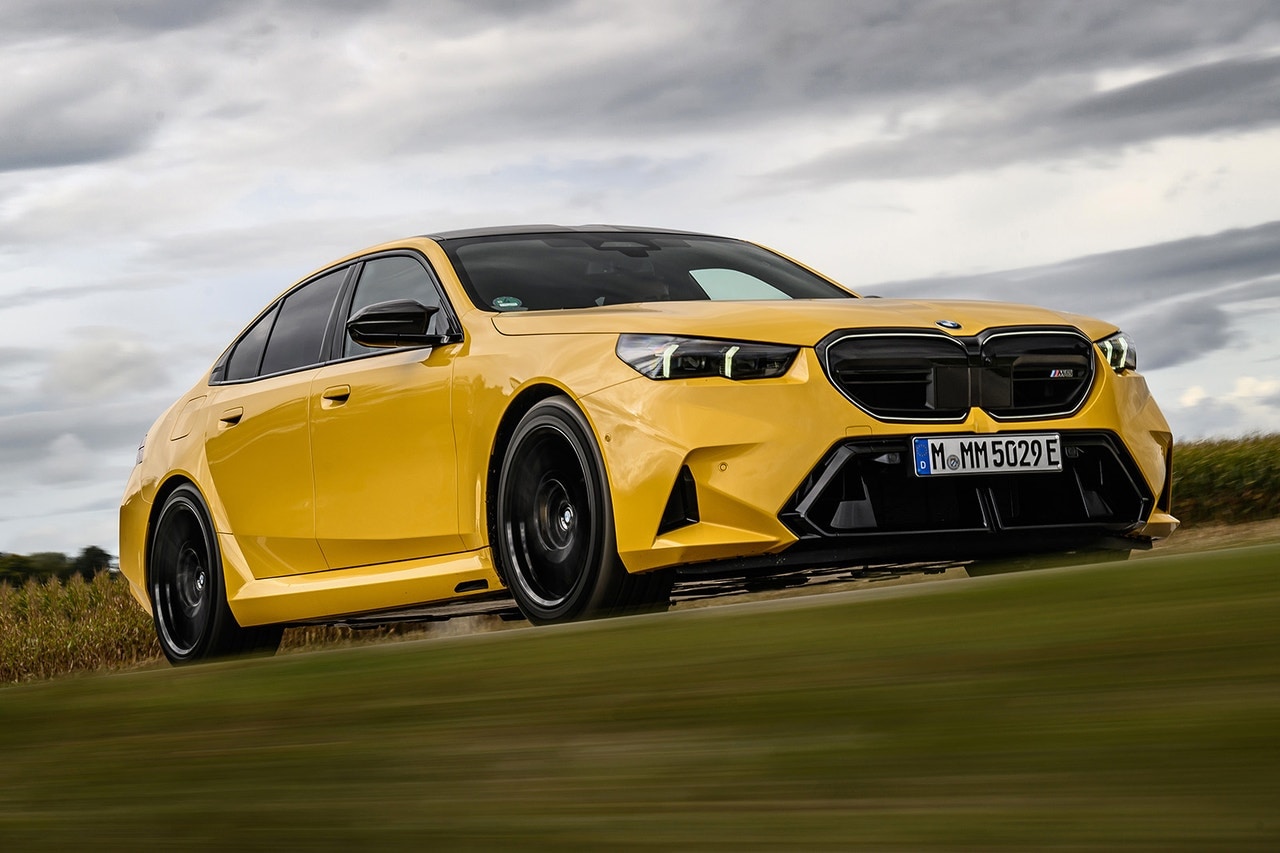
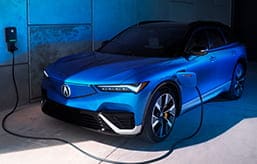
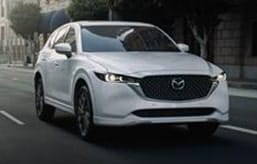
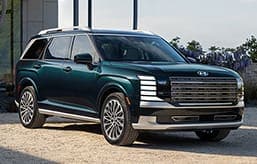
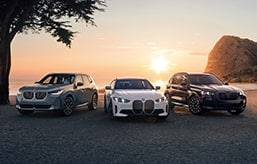
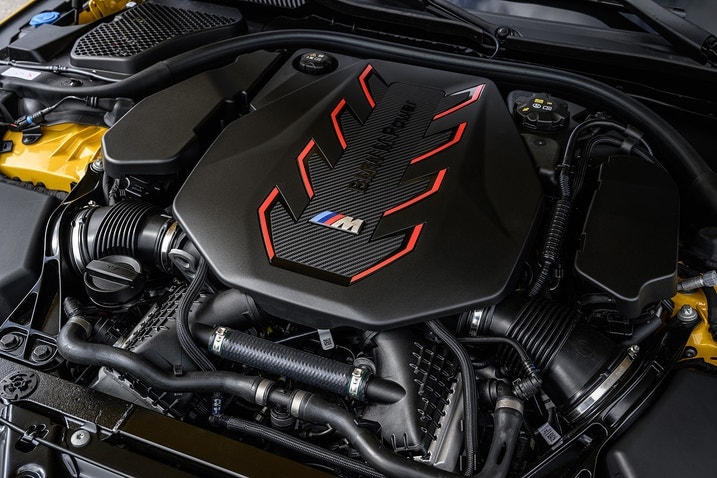
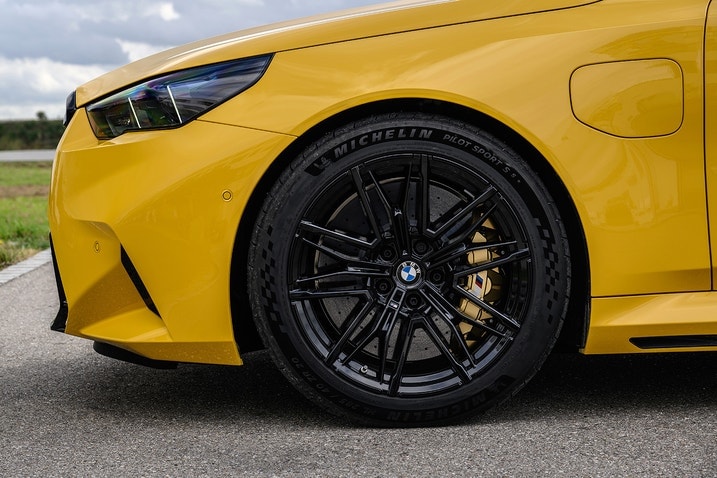
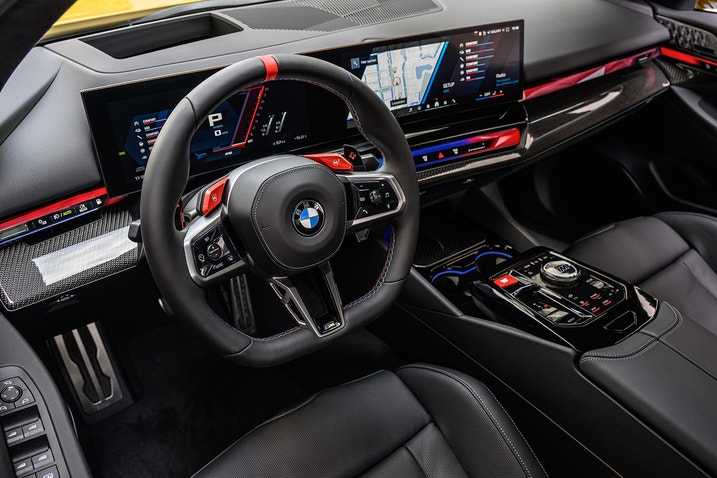
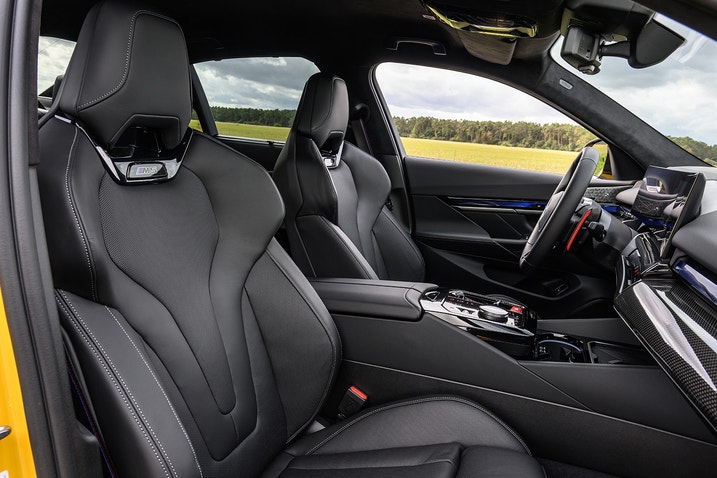
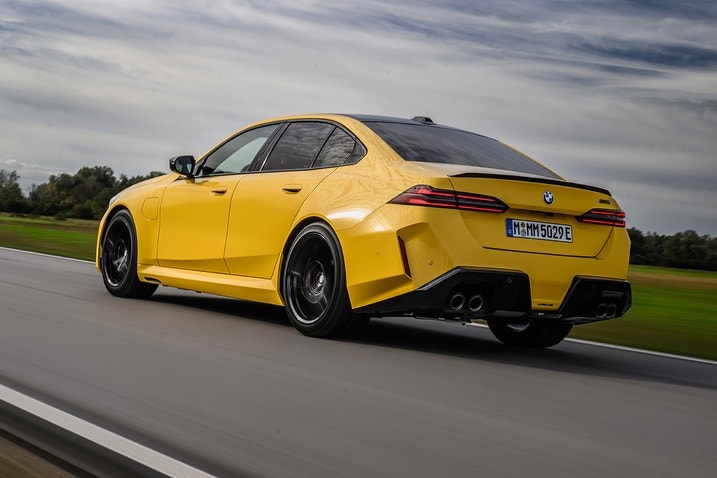
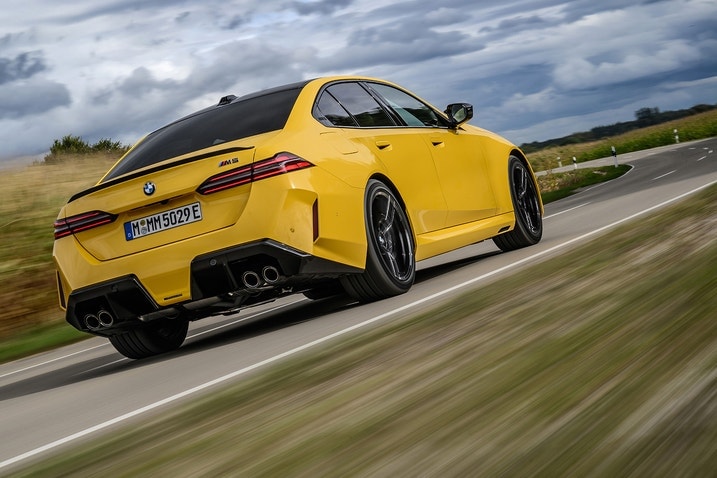
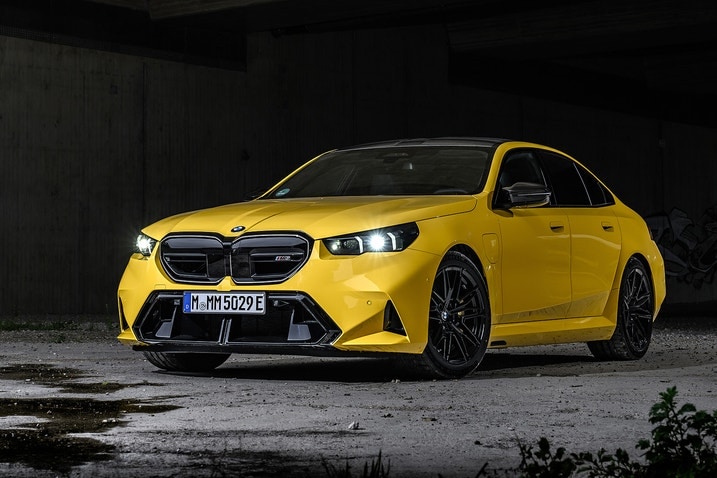
 by
by  edited by
edited by